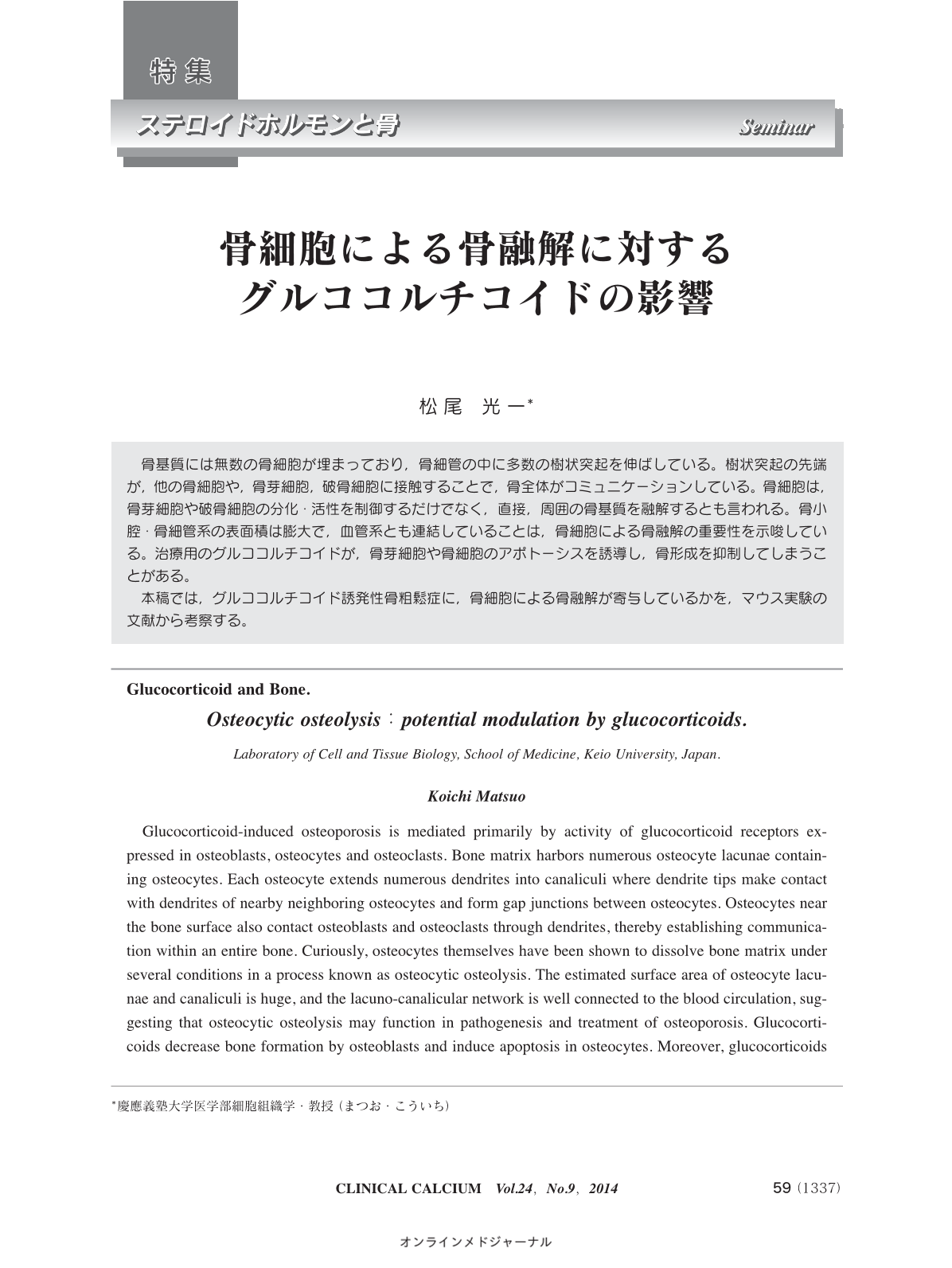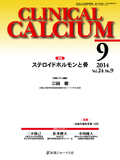Japanese
English
- 有料閲覧
- Abstract 文献概要
- 1ページ目 Look Inside
- 参考文献 Reference
骨基質には無数の骨細胞が埋まっており,骨細管の中に多数の樹状突起を伸ばしている。樹状突起の先端が,他の骨細胞や,骨芽細胞,破骨細胞に接触することで,骨全体がコミュニケーションしている。骨細胞は,骨芽細胞や破骨細胞の分化・活性を制御するだけでなく,直接,周囲の骨基質を融解するとも言われる。骨小腔・骨細管系の表面積は膨大で,血管系とも連結していることは,骨細胞による骨融解の重要性を示唆している。治療用のグルココルチコイドが,骨芽細胞や骨細胞のアポトーシスを誘導し,骨形成を抑制してしまうことがある。 本稿では,グルココルチコイド誘発性骨粗鬆症に,骨細胞による骨融解が寄与しているかを,マウス実験の文献から考察する。
Glucocorticoid-induced osteoporosis is mediated primarily by activity of glucocorticoid receptors expressed in osteoblasts, osteocytes and osteoclasts. Bone matrix harbors numerous osteocyte lacunae containing osteocytes. Each osteocyte extends numerous dendrites into canaliculi where dendrite tips make contact with dendrites of nearby neighboring osteocytes and form gap junctions between osteocytes. Osteocytes near the bone surface also contact osteoblasts and osteoclasts through dendrites, thereby establishing communication within an entire bone. Curiously, osteocytes themselves have been shown to dissolve bone matrix under several conditions in a process known as osteocytic osteolysis. The estimated surface area of osteocyte lacunae and canaliculi is huge, and the lacuno-canalicular network is well connected to the blood circulation, suggesting that osteocytic osteolysis may function in pathogenesis and treatment of osteoporosis. Glucocorticoids decrease bone formation by osteoblasts and induce apoptosis in osteocytes. Moreover, glucocorticoids reportedly increase the size of osteocyte lacunae, and enhance perilacunar remodeling. In this review, we discuss whether and how osteocytic osteolysis contributes to glucocorticoid-induced osteoporosis using mouse models.



